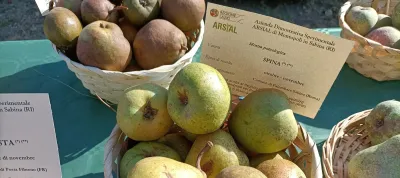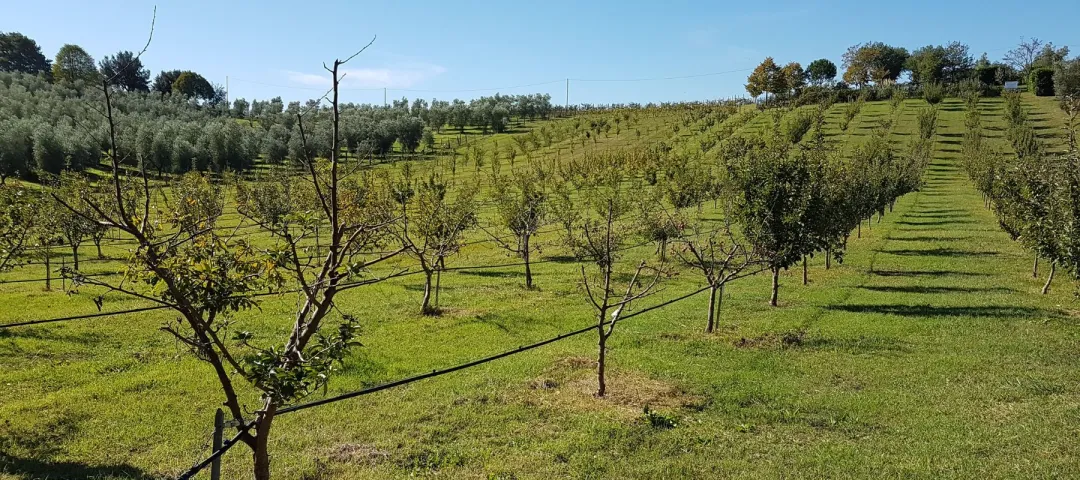General information
RDP Priority
- P4. Ecosystems management
RDP Focus Area
- 4A: Biodiversity restoration, preservation & enhancement
RDP Measure
- M10: Agri-environment-climate
Beneficiary type
- Public authority / body
Summary
ARSIAL, the regional agency for the development and innovation of agriculture in Lazio, implemented a national law to safeguard and promote the recovery and valorisation of endangered food and agricultural species.
Leveraging the Rural Development Programme's agri-environment climate measure (AECM), they conducted genetic studies, identified traditional plant varieties, provided training and demonstrations, established a network of guardian farmers, and used other tools to promote local plant and orchard varieties.
Results
- Identified and registered old local plant varieties in the regional endangered species and varieties register.
- Organised 40 public events, published nine scientific papers, created 10 short documentaries and interviewed farmers to showcase the importance of preserving these varieties.
- Offered technical support to farmers, established two seed banks and conducted eight training sessions for farmers to enhance their knowledge and skills.

Promoter
ARSIAL (Agenzia Regionale per lo Sviluppo e l'Innovazione dell'Agricoltura del Lazio)
Funding
Total budget 500 000 (EUR)
EAFRD: 215 600 (EUR)
National/Regional: 284 400 (EUR)
Resources
Documents
Context
After joining the Convention on Biological Diversity (CBD), Italy and its regional authorities, including the Lazio region in central Italy, have enacted specific regulations to protect and promote farmland plant and animal species. Law n.15/2000 in Lazio was updated with the provisions of regional law n.194/2015, focusing on safeguarding and promoting endangered species of culinary and agricultural importance. ARSIAL, the regional agency for agricultural development and innovation in Lazio, is responsible for implementing this law. It used sectoral and annual programmes supported by CAP funds from the AECM measure.
Objectives
Project objectives were to:
- Improve scientific knowledge about old indigenous plant and animal species and varieties.
- Raise awareness and improve farmers' skills relating to the pruning and grafting of orchard species.
- Add orchard varieties to the regional voluntary register of endangered species and varieties, and the national orchard register.
- Enhance the regional nursery value chain with a focus on old plant varieties
Activities
Project activities included:
- Conducting genetic studies in collaboration with the University of Viterbo (cherry), University of Padua (pear, apricot, peach, plum, and fig species), and CREA (national centre for agricultural research).
- Performing phytosanitary monitoring of the identified germplasm of old orchard varieties for reproduction and distribution purposes.
- Carrying out morphological studies and characterisations in accordance with the norms established by the national farm biodiversity plan.
- Organising dissemination initiatives.
- Offering technical assistance to farmers of the regional network for farm biodiversity conservation.
Main results
- Identified old local plant varieties as follows: 25 orchard varieties, four olive varieties, 17 vine varieties and four cereal varieties.
- The morphological study and characterisation covered 10 chestnut varieties, 22 olive varieties, four vine varieties, 12 pepper and 40 maize varieties.
- Enrolled in the regional voluntary register of endangered species and varieties of five orchard varieties, five chestnut varieties, seven vine varieties, 19 olive varieties, five tomato varieties, three cabbage varieties and six bean varieties.
- Organised demonstration and dissemination initiatives: 40 public events in various locations/contexts, including a final open congress held on 20/05/2024 on the national biodiversity day; nine scientific publications; 12 posters, plus brochures and roll-ups; 10 short documentaries and many interviews with farmers.
- Provided technical assistance to farmers on the maintenance of two fields hosting hundreds of old indigenous orchard species/varieties, set up two seed banks, and organised eight updating and training days for farmers.
- All of the above results fed into and supported the set-up of a regional chain of nurseries for reproducing and distributing the seedlings of the protected local varieties.
Key lessons
- This project highlights the importance of preserving agro-genetic resources through a network of local farmers cultivating native varieties. Such a network represents a dynamic and active method compared to germplasm collection, which ARSIAL carries out.
- Expanding similar projects to regional scale, especially among neighbouring regions, could further enhance the protection of agro-biodiversity.
- Every project aimed at protecting agro-genetic resources at risk of extinction should start with carefully studying the morphological and molecular characteristics of the species in question, along with the phytosanitary analysis of genetic material, which plants and trees often represent in precarious conditions.
- Identifying pathways for valorising genetic resources, often considered niche or traditional agrifood products, should involve collaboration with farms, research institutions, and local communities that have historically safeguarded these resources. This approach can be reinforced by setting up specific guarding communities of agro-biodiversity options within the framework of national law 194/2015 (Art. 13).
“Looking at future developments of this and of other similar projects, we can think of identifying appropriate qualitative parameters for fresh and processed produce; valorising agro-genetic resources through processing lines (e.g. dried fruit, jam, juices); valorising them via the set-up of local value chains, as an alternative to large-scale, organised distribution.”
